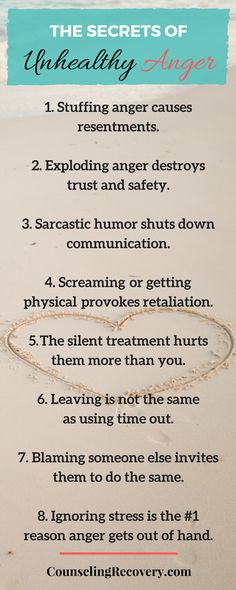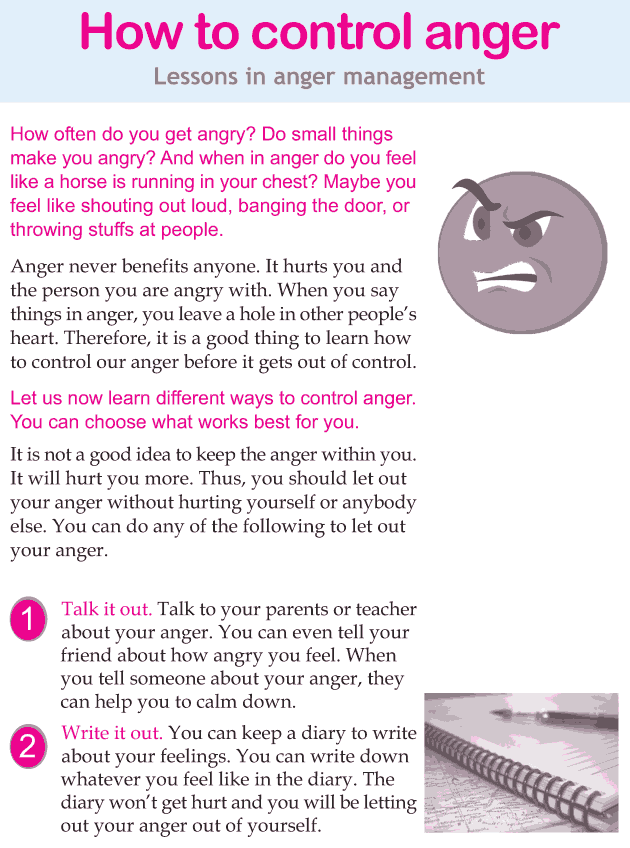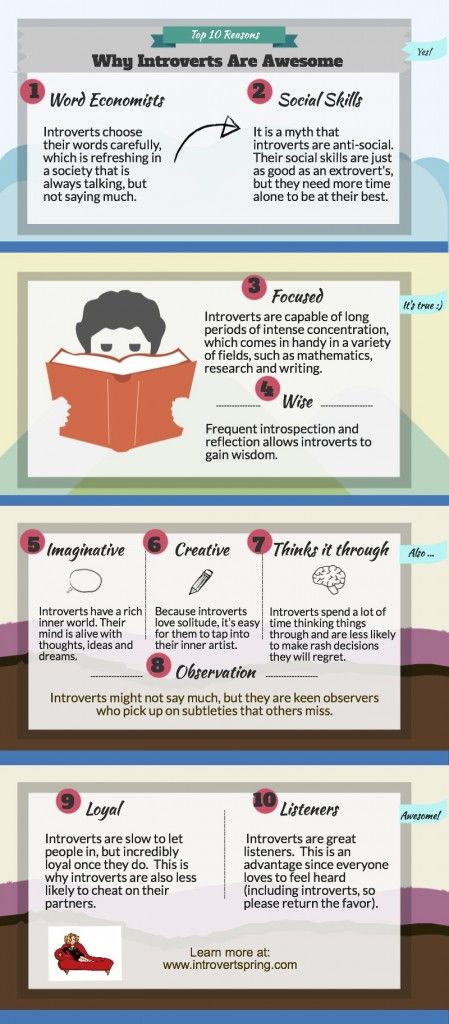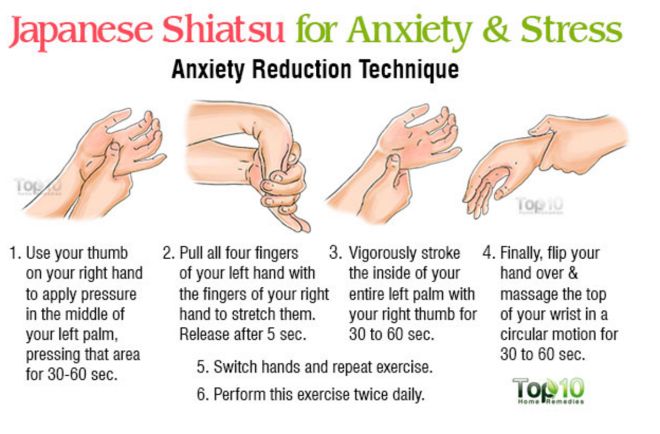How to vent anger without hurting anyone
10 Healthy Ways to Release Rage
As a health care worker during the COVID-19 pandemic, you’ve probably dealt with some anger over the last few months, as the virus continues to take lives across the United States. With infection rates climbing once again, that anger may increase in intensity - what was once frustration may become full-blown rage. The circumstances causing this rage might be beyond your control (you can’t easily change how your government officials are handling COVID-19 in your community or force everyone to obey regulations), but you can control your own reactions. Relaxation techniques or mindfulness often work for lower intensity anger like frustration or annoyance, but with a feeling as high energy as rage, try to let that energy out in a safe way.
- Throw or break something (safely).
via GIPHY
Physically throwing something can relieve stress and be helpful in the immediate moment.Have a yard? Get out there with a ball or find some rocks to throw if you have enough space. Or smash something, like a mug or old piece of junk that you’ve been meaning to get rid of. If that’s not a realistic option, get creative - throw something soft (like balled up socks or a roll of toilet paper) against a blank wall or an apple into the woods (the birds will get it).
- Scream – in private.
via GIPHY
When you can feel anger boiling inside you, yelling is often incredibly cathartic and can pull you out of that blind rage you may be experiencing. Take care to not startle or worry anyone (including nearby neighbors) by screaming into a pillow. If you’re at work and can take a break for a few minutes, your car is good option too.
- Sing it out.

via GIPHY
Put on some music that has anger in it – even if the artist’s anger is different from yours. Channeling your own feelings into the song and expressing that fury can help release some of your own anger.
- Dance it out.
via GIPHY
Dancing can be a great way to express your emotions, especially when they are so powerful that you can physically feel them in your body. Dance to angry music, happy pump-up music, or no music – just get that excess energy out.
- Do a tough workout.
via GIPHY
If dancing isn’t your thing, try another form of high energy exercise, like boxing or sprinting. You can search for free workout videos online or do your own thing, but make sure to push yourself and give it your all if you’re looking for that anger release. It might feel silly but yelling or grunting while working out might even help you exert more energy.
You can search for free workout videos online or do your own thing, but make sure to push yourself and give it your all if you’re looking for that anger release. It might feel silly but yelling or grunting while working out might even help you exert more energy.
- Journal.
via GIPHY
Putting your feelings into words isn’t always easy and writing may not be your go-to technique, but if your mind is spiraling with angry thoughts, dumping them all out onto paper can bring some peace. It doesn’t have to be a big ordeal – even just typing a stream-of-consciousness note on your phone during a quick bathroom break can help calm your mind.
- Draw or paint.
via GIPHY
Art is often a powerful way to confront your big feelings and turn them into something beautiful. Let go of your work being “good” – allow yourself to create solely to express yourself. Do what feels good rather than focusing on what will look good.
- Change your surroundings.
via GIPHY
When you can’t quiet your thoughts, a change of scenery – even just going into the next room or stepping outside for five minutes – can disrupt the track that your mind is on.
- Destroy a physical representation of your anger.
via GIPHY
Print out that email that set you off or write down the things that are upsetting you. Then scribble all over it, tear it up, or put it through the shredder.
Then scribble all over it, tear it up, or put it through the shredder.
- Verbalize your anger.
via GIPHY
You can always vent to a trusted friend, but sometimes it feels better to pretend you’re talking directly to the person you’re angry at. Pick an empty chair, imagine they’re sitting in it, and yell, scream, or tell them exactly why you’re so mad – whatever feels best to you.
If you’re working to manage your feelings in a healthy way but it just seems impossible, take a mental health screen – you may be dealing with symptoms of a mental health condition. For immediate support, you can reach out to Magellan Health’s COVID-19 first responder crisis line at (800) 327-7451, the Disaster Distress Helpline at (800) 985-5990, or the Crisis Text Line by texting MHA to 741-741 – all of these options will connect you to a trained crisis counselor 24/7/365.
11 Tips for Letting Go
Waiting in long lines, dealing with snide remarks from co-workers, driving through endless traffic — it can all become a bit much. While feeling angry by these daily annoyances is a normal response to stress, spending all your time being upset can become destructive.
It’s no secret that letting anger simmer or having rage outbursts hurts your personal and professional relationships. But it also impacts your well-being. Constantly bottling up our frustration can lead to physical and emotional reactions, including like high blood pressure and anxiety.
The good news is that you can learn to manage and channel your anger constructively. One 2010 study found that being able to express your anger in a healthy way can even make you less likely to develop heart disease.
In the heat of the moment, it’s easy to overlook your breathing. But that kind of shallow breathing you do when you’re angry keeps you in fight-or-flight mode.
To combat this, try taking slow, controlled breaths you inhale from your belly rather than your chest. This allows your body to instantly calm itself.
This allows your body to instantly calm itself.
You can also keep this breathing exercise in your back pocket:
- Find a chair or place where you can comfortably sit, allowing your neck and shoulders to fully relax.
- Breathe deeply through your nose, and pay attention to your tummy rising.
- Exhale through your mouth.
- Try doing this exercise 3 times a day for 5 to 10 minutes or as needed.
Repeating a calming phrase can make it easier to express difficult emotions, including anger and frustration.
Try slowly repeating, “Take it easy,” or “Everything’s going to be okay,” the next time you’re feeling overwhelmed by a situation. You can do this out loud if you want, but you can also say it under your breath or in your head.
You can also keep a list of phrases on your phone for a quick reminder before a stressful work presentation or challenging meeting.
Finding your happy place in the midst of a flight delay or work setback can help you feel more relaxed in the moment.
When wrestling with boiling tension, try painting a mental picture to calm your body and brain:
- Think of a real or imaginary place that makes you feel happy, peaceful, and safe. This can be that camping trip to the mountains you took last year or an exotic beach you’d like to visit someday.
- Focus on the sensory details by envisioning yourself there. What are the smells, sights, and sounds?
- Be aware of your breathing and keep this image in your mind until you feel your anxiety start to lift.
Sometimes, sitting still can make you feel even more anxious or on edge. Mindfully moving your body with yoga and other calming exercises can release tension in your muscles.
The next time you’re confronted by a stressful situation, try taking a walk or even doing some light dancing to keep your mind off the stress.
Moments of high stress can warp your perception of reality, making you feel like the world is out to get you. The next time you feel anger bubbling up, try to check your perspective.
Everyone has bad days from time to time, and tomorrow will be a fresh start.
Angry outbursts won’t do you any favors, but that doesn’t mean you can’t vent your frustrations to a trusted friend or family member after a particularly bad day. Plus, allowing yourself space to express some of your anger prevents it from bubbling up inside.
Finding the humor in a heated moment can help you keep a balanced perspective. This doesn’t mean you should simply laugh off your problems, but looking at them in a more lighthearted way can help.
The next time you feel your rage bubbling up, imagine how this scenario might look to an outsider? How might this be funny to them?
By not taking yourself too seriously, you’ll have more chances to see how unimportant minor annoyances are in the big scheme of things.
Give yourself a break by taking some personal time from your immediate surroundings.
If your home is cluttered and stressing you out, for example, take a drive or a long walk. You’ll likely find that you’re better equipped to sort through the mess when you return.
You’ll likely find that you’re better equipped to sort through the mess when you return.
If your daily commute turns you into ball of rage and frustration, try finding an alternative route or leaving earlier for work. Got a loud co-worker who constantly taps their foot? Look into some noise-cancelling headphones.
The idea is to pinpoint and understand the things that trigger your anger. Once you’re more aware of what they are, you can take steps to avoid falling prey to them.
If you aren’t sure where your anger is coming from, try to remind yourself to take a moment the next time you feel angry. Use this time to take stock of what happened in the moments leading up to your feelings of anger. Were you with a particular person? What were you doing? How were you feelings leading up to that moment?
While dwelling on your day’s misfortunes can seem like the natural thing to do, it won’t help you in the short or long term.
Instead, try refocusing on the things that went well. If you can’t find the silver lining in the day, you can also try thinking how things might’ve gone even worse.
If you can’t find the silver lining in the day, you can also try thinking how things might’ve gone even worse.
It’s totally normal and healthy to feel upset an angry from time to time. But if you can’t shake a bad mood or constantly feel overwhelmed by anger, it might be time to ask for help.
If your anger is impacting your relationships and well-being, talking with a qualified therapist can help you work through the sources of your anger and help you develop better coping tools.
Cindy Lamothe is a freelance journalist based in Guatemala. She writes often about the intersections between health, wellness, and the science of human behavior. She’s written for The Atlantic, New York Magazine, Teen Vogue, Quartz, The Washington Post, and many more. Find her at cindylamothe.com.
Healthy aggression: 5 ways to deal with anger
Health
© Thought Catalog/Unsplash
Author Yulia Tsiruleva
June 19, 2019
Feeling angry is a normal human reaction. It is important to let it out, but in a way that is not destructive to you or to others. And here's how you can do it.
It is important to let it out, but in a way that is not destructive to you or to others. And here's how you can do it.
When we condemn ourselves for being angry, it doubles the annoyance and makes the situation worse. Experts advise to recognize unpleasant feelings and try to find the cause of aggression. Perhaps a colleague who didn’t notice you at the meeting felt bad, and a loved one was late for a date because he unexpectedly got stuck in traffic, and not because he neglected your time. If anger is the result of actions that really threaten your well-being, then being aware of this will help protect yourself. Psychologists have developed simple techniques to deal with negative feelings and learn how to behave better.
Advertising on RBC www.adv.rbc.ru
The easiest and fastest way to calm down is to even out your breathing. The brain does not know how to immediately disconnect from strong emotions, so you need to help it pause with the help of breathing exercises. Try to take a few deep breaths in and out, trying to breathe in your belly. Measured breathing allows you to get rid of unpleasant emotions and tune in to a calm, relaxed state.
Try to take a few deep breaths in and out, trying to breathe in your belly. Measured breathing allows you to get rid of unpleasant emotions and tune in to a calm, relaxed state.
Crying is a natural biological mechanism that allows you to throw out negative emotions and reduce stress. You can scream in the car or at home, loudly, at the top of your voice or into a pillow. Try to watch a sports match and cheer. Or scream to the music - the latest research shows that heavy metal, punk and hard rock are calming and help neutralize anger and bad moods. Be prepared for the fact that after a scream, the reaction may change to uncontrollable laughter.
For example, beat a pillow. Fists, legs, tennis racket - as you like. You can get yourself a special durable “whipping pillow” - old sofa cushions are well suited for this. If possible, spend five minutes exercising or dancing. A short, simple exercise helps to get rid of stress, calm down and improve mood.
Another useful way to deal with anger is to clean up. Use the energy of aggression to clean windows, take apart cabinets, or move furniture. If you want to destroy more than clean up, use a special service where you can beat dishes, misbehave and smash appliances and furniture to pieces.
Use the energy of aggression to clean windows, take apart cabinets, or move furniture. If you want to destroy more than clean up, use a special service where you can beat dishes, misbehave and smash appliances and furniture to pieces.
We often avoid unpleasant conversations until the very end for fear of offending the interlocutor, making the situation worse, or in response to an important request to be rejected. But the accumulated negative emotions and unspoken desires do not go anywhere. In this state, a minor occasion can provoke an outburst of anger.
Try to talk directly to others about your condition. Close and beloved people, friends, colleagues may not realize that you lack their attention, you feel offended and forgotten.
When deciding to talk, try to avoid accusations and criticism. You may need to apply one of the previous methods first, or even try them all. The best way to use I-messages is to talk about your feelings in the first person. Then you can calmly explain what hurt or angered you. Ask the interlocutor to explain his position - probably together you can understand the situation and find a solution.
Then you can calmly explain what hurt or angered you. Ask the interlocutor to explain his position - probably together you can understand the situation and find a solution.
Psychologists believe that it is useful to express anger and resentment on paper or in a computer file - this is another way to throw out what has accumulated inside. Try writing a letter to someone who made you angry or offended. No need to focus on writing coherent, beautiful text: write whatever you think and feel. Then the file can be deleted, and the paper letter can be torn or burned. Or, if you want, edit the text and send it to the addressee.
How to throw out accumulated anger and irritation
October 4 Life
Five proven and safe ways.
Iya Zorina
Author of Lifehacker, athlete, CCM
Share
0 You can listen to the short version of the article. If it's more convenient for you, turn on the podcast.
If it's more convenient for you, turn on the podcast.
Why you shouldn't keep anger in yourself
According to the American Psychological Association, only 10% of anger ends in aggression - physical or verbal pressure to cause harm.
On the one hand, this is good, because in a state of passion it is easy to do something that you will regret. On the other hand, it can be no less dangerous to keep negativity in oneself.
So, in one experiment, they found that men who express anger are less likely to suffer from myocardial infarction and stroke than those who show almost no negative emotions.
In addition, by keeping your emotions out on a regular basis, you run the risk of becoming passive-aggressive, cynical and hostile, which will not have the best effect on your relationship.
How to safely vent anger
Here are five good ways to get rid of anger as safely as possible for yourself and others.
1. Destroy unnecessary things
If you have the opportunity, retire to a free room and throw out aggression on objects.
Iya Zorina
Lifehacker fitness expert.
When I taught my son to read, his inattention and unwillingness to concentrate drove me to white heat. In order not to break down on the child, I asked him to wait, after which I carried the broken toys in another room with particular cruelty and returned to classes in a calm and even high spirits.
Use whatever you don't mind. Pillows, old furniture, paper, broken toys or non-working appliances. Just be careful with sharp and fragile objects: in a state of passion, you can get hurt and not even notice it.
2. Try the empty chair method
This is one of the popular Gestalt therapy techniques that helps resolve internal conflicts.
You place two chairs opposite each other and sit on one of them. Depending on the goal, on the second one you can represent the person with whom you had a conflict, or, for example, your inner critic.
After that, you say out loud whatever you want to the imaginary interlocutor: the essence of the problem, accusations, arguments in favor of your decision. Then you move to another chair and answer, but now on behalf of the one to whom all this was intended, whether it be an individual person or some part of you that does not agree with the previous opinion.
Then you move to another chair and answer, but now on behalf of the one to whom all this was intended, whether it be an individual person or some part of you that does not agree with the previous opinion.
By imagining yourself in the place of another person, you are trying to understand his point of view. And this is very important when it comes to conflicts.
One review study noted that having constructive dialogue, talking about your feelings, and trying to understand the other person is the least unhealthy way to show anger.
Those who dealt with their negative feelings in this way were much less likely to suffer from heart disease, depression, and anxiety than people who were accustomed to blaming others and proving themselves right.
The empty chair method has two benefits:
- Don't ruin your relationship with someone who has caused a flurry of negative emotions, but instead safely vent aggression and reduce the degree of tension.

- Try to understand the other person's motives, which will have a good effect on your condition and help get rid of anger.
3. Listen to music
This is a good way for situations where you can't be alone and have to deal with your emotions around other people.
Put on your headphones, select the heaviest, darkest and most aggressive song and turn up the volume.
Iya Zorina
This method has saved me more than once in the gym after unsuccessful runs in the snatch or clean and jerk. Someone kicks a bucket of locks and swears at the whole room, and I put on my headphones and turn on something like Uratsakidogi “You feel it.” Helps no worse.
If possible, try to sing along as loudly as you like.
4. Write about how you feel
When you are angry or scared, the amygdala, the structure responsible for the fight-or-flight response, is activated in the brain. Since survival is directly dependent on the work of this area of \u200b\u200bthe brain, it is very sensitive to all sorts of threats, real or imagined.
However, there is something that can subdue the activity of the anxiety system of the brain, namely, the verbal expression of emotions.
In one experiment, people were shown a picture of an angry face and asked to choose between the labels "Angry" and "Scared." The next time they repeated the same thing, but now they asked the participants to choose between "Harry" and "Sally".
Scientists found that when people labeled a photo as "Evil," activity in the amygdala was reduced, while the choice of a name had no effect on how the amygdala worked.
Psychology professor Matthew Lieberman explains that by putting our feelings into words, we activate the right ventrolateral prefrontal cortex (RVFC), the brain structure responsible for processing emotions and curbing impulses.
It helps to calm the amygdala and bring you back to your senses.
Grab a piece of paper and a pen or open a note on your phone and write down all your feelings at the moment, what caused them, and absolutely anything you want to add. Feel free to express yourself, don't worry about spelling and punctuation, and if you want, destroy the text as soon as you're done.
5. Work out
There is some evidence that regular exercise can help you better control anger and manage stress.
Moreover, aerobic exercise triggers the release of endogenous cannabinoids, substances that transmit signals between nerve cells, reduce anxiety and symptoms of depression, and in large quantities can provide a feeling of euphoria.
Thus, after running a dozen kilometers or doing an intense interval complex, you will most likely forget about your anger and feelings altogether. However, this method is only suitable for those who are already engaged and are well aware of their capabilities and limitations.
The fact is that when you get angry, you feel bad about your condition: you lose concentration and caution, you don't notice fatigue and ignore pain. All this greatly increases the risk of injury.
Moreover, anger and frustration, combined with training, increase the risk of myocardial infarction and cerebral hemorrhage from a burst blood vessel.














